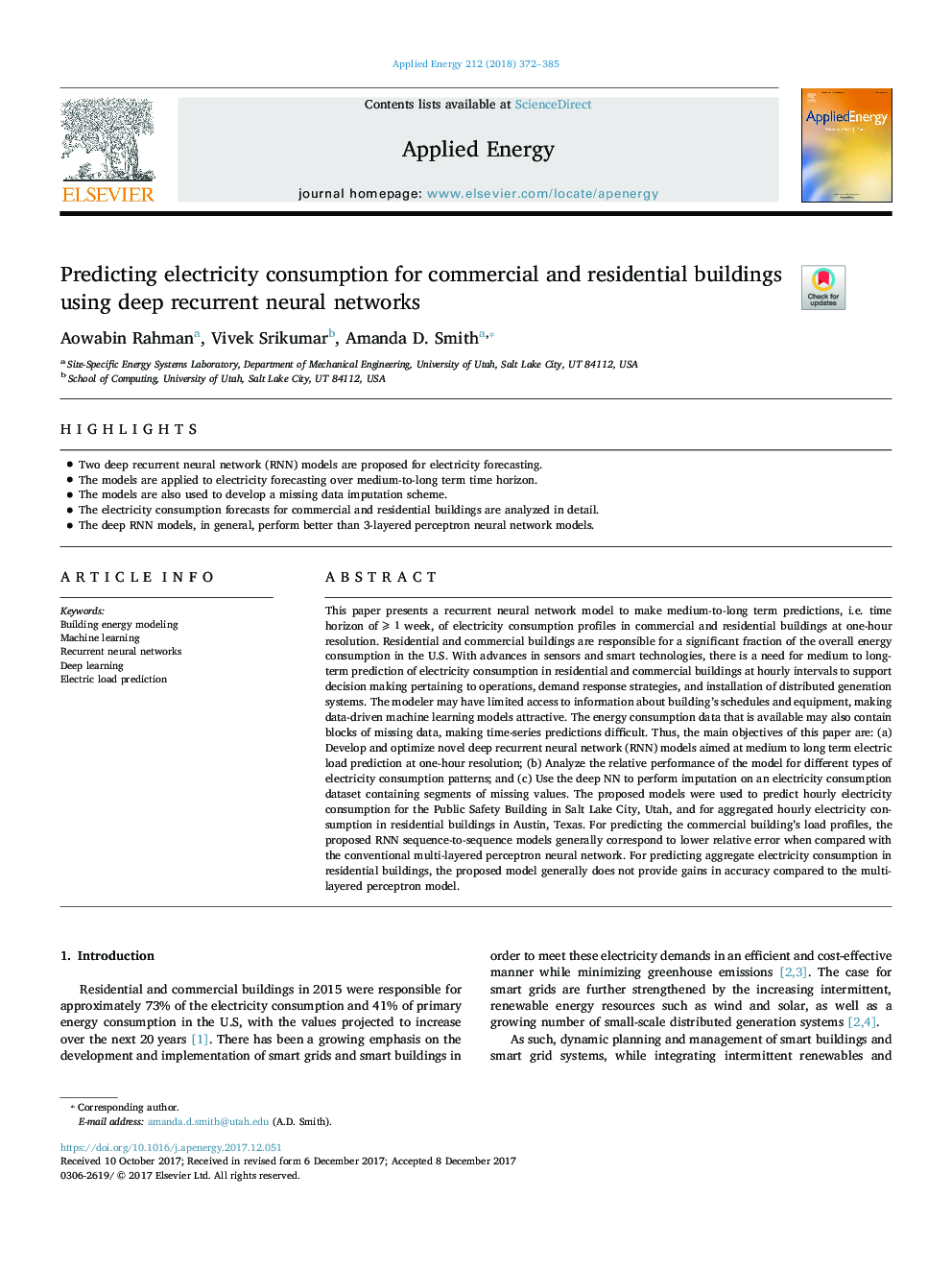| Article ID | Journal | Published Year | Pages | File Type |
|---|---|---|---|---|
| 6680925 | Applied Energy | 2018 | 14 Pages |
Abstract
This paper presents a recurrent neural network model to make medium-to-long term predictions, i.e. time horizon of ⩾1 week, of electricity consumption profiles in commercial and residential buildings at one-hour resolution. Residential and commercial buildings are responsible for a significant fraction of the overall energy consumption in the U.S. With advances in sensors and smart technologies, there is a need for medium to long-term prediction of electricity consumption in residential and commercial buildings at hourly intervals to support decision making pertaining to operations, demand response strategies, and installation of distributed generation systems. The modeler may have limited access to information about building's schedules and equipment, making data-driven machine learning models attractive. The energy consumption data that is available may also contain blocks of missing data, making time-series predictions difficult. Thus, the main objectives of this paper are: (a) Develop and optimize novel deep recurrent neural network (RNN) models aimed at medium to long term electric load prediction at one-hour resolution; (b) Analyze the relative performance of the model for different types of electricity consumption patterns; and (c) Use the deep NN to perform imputation on an electricity consumption dataset containing segments of missing values. The proposed models were used to predict hourly electricity consumption for the Public Safety Building in Salt Lake City, Utah, and for aggregated hourly electricity consumption in residential buildings in Austin, Texas. For predicting the commercial building's load profiles, the proposed RNN sequence-to-sequence models generally correspond to lower relative error when compared with the conventional multi-layered perceptron neural network. For predicting aggregate electricity consumption in residential buildings, the proposed model generally does not provide gains in accuracy compared to the multi-layered perceptron model.
Related Topics
Physical Sciences and Engineering
Energy
Energy Engineering and Power Technology
Authors
Aowabin Rahman, Vivek Srikumar, Amanda D. Smith,
